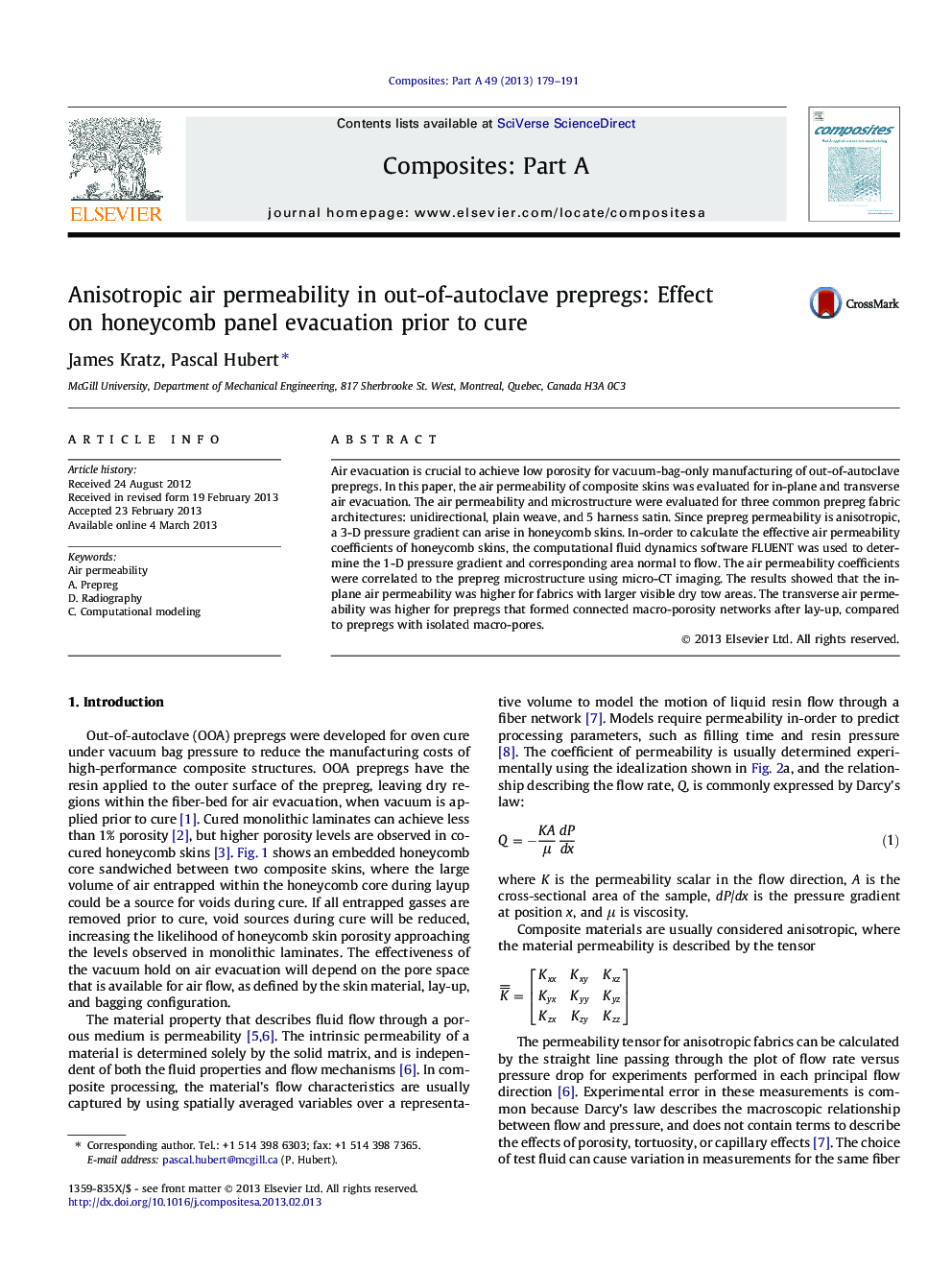| Article ID | Journal | Published Year | Pages | File Type |
|---|---|---|---|---|
| 1466280 | Composites Part A: Applied Science and Manufacturing | 2013 | 13 Pages |
Air evacuation is crucial to achieve low porosity for vacuum-bag-only manufacturing of out-of-autoclave prepregs. In this paper, the air permeability of composite skins was evaluated for in-plane and transverse air evacuation. The air permeability and microstructure were evaluated for three common prepreg fabric architectures: unidirectional, plain weave, and 5 harness satin. Since prepreg permeability is anisotropic, a 3-D pressure gradient can arise in honeycomb skins. In-order to calculate the effective air permeability coefficients of honeycomb skins, the computational fluid dynamics software FLUENT was used to determine the 1-D pressure gradient and corresponding area normal to flow. The air permeability coefficients were correlated to the prepreg microstructure using micro-CT imaging. The results showed that the in-plane air permeability was higher for fabrics with larger visible dry tow areas. The transverse air permeability was higher for prepregs that formed connected macro-porosity networks after lay-up, compared to prepregs with isolated macro-pores.
